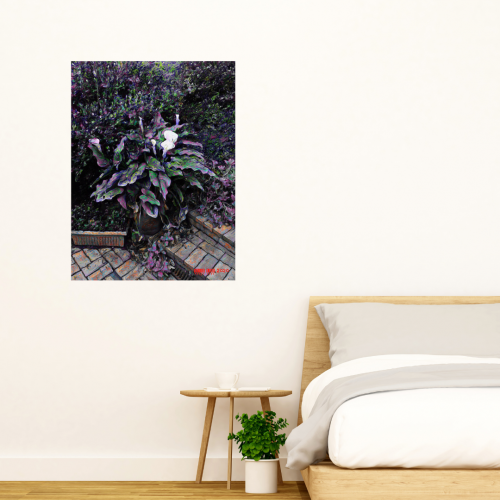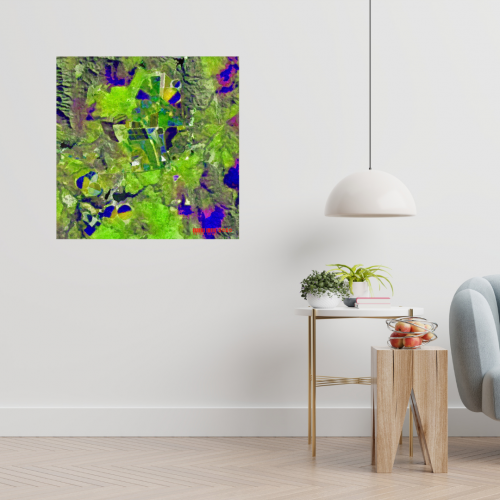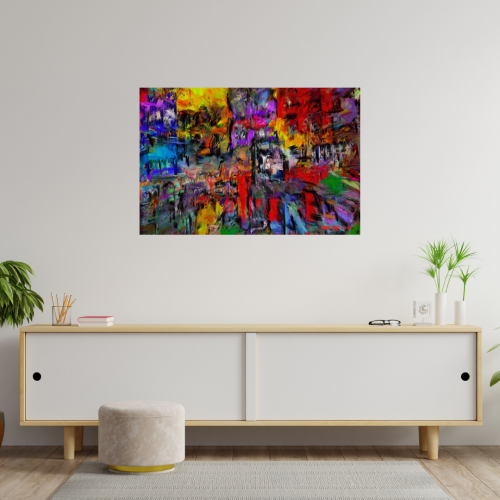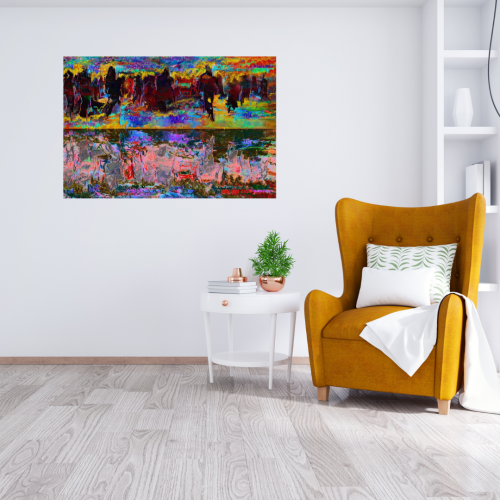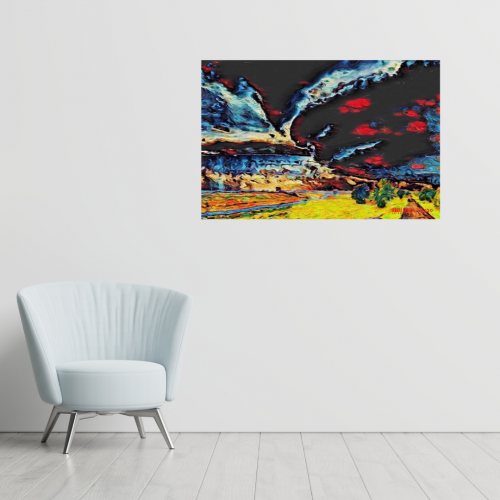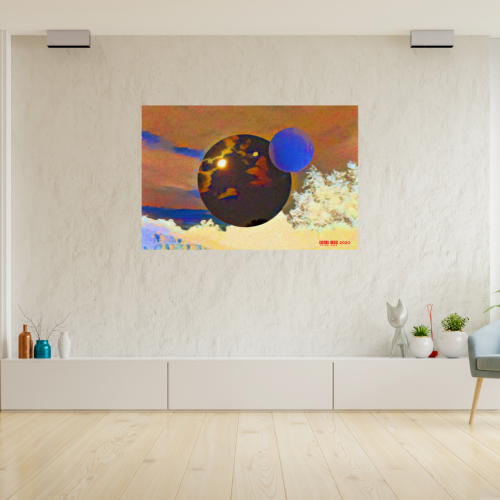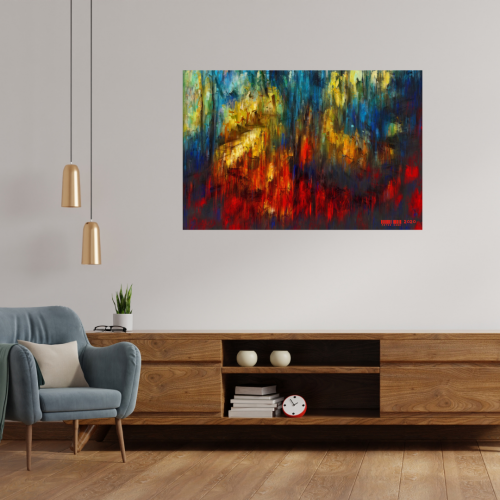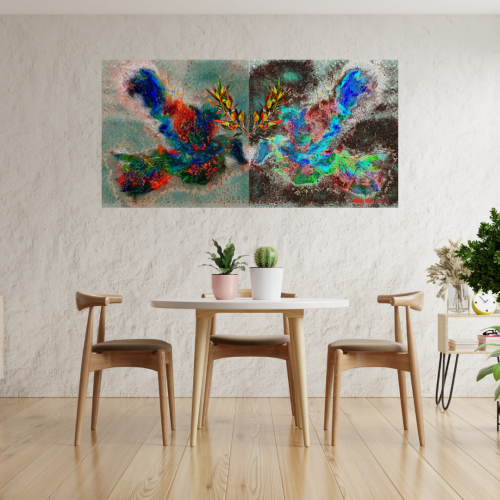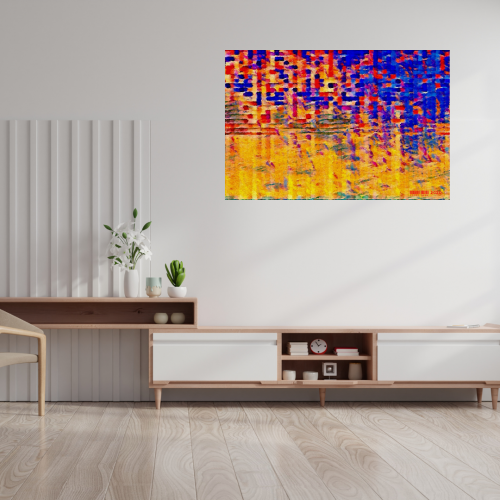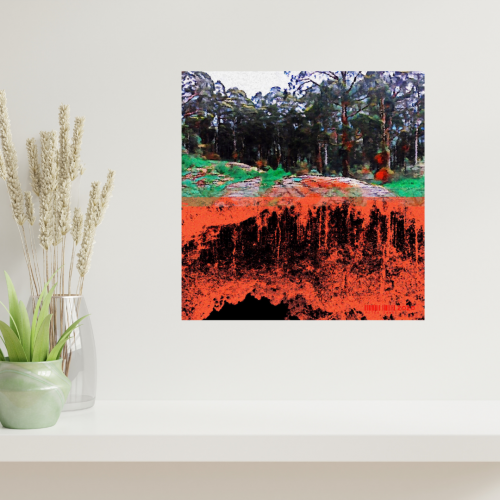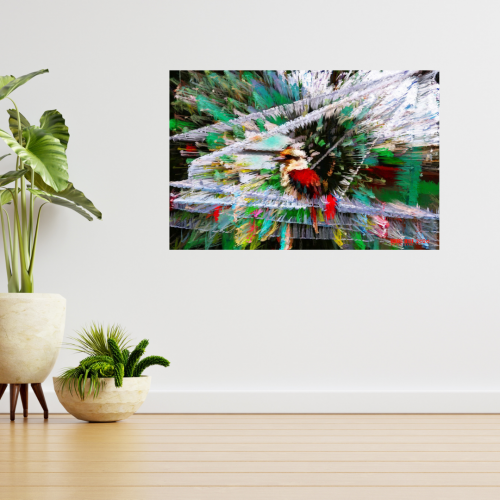These two works Changin' seasons #1 2020 and Changin' seasons #2 2020 recognise the workings of entropy of nature. Entropy: the theory that all forms and systems are in a constant state of decay or change. Nature is in a constant state of impermanence. In these two works represent time-lapsed views of one of our stunning Canna lilies. I have changed colours to demonstrate the changes that we don’t see. Like colours we don’t see, these colours represent the slow changes, the impermanence in the life cycle of our beautiful Calla lily.
-
60x40cm 2020
These two works Changin' seasons #1 2020 and Changin' seasons #2 2020 recognise the workings of entropy of nature. Entropy: the theory that all forms and systems are in a constant state of decay or change. Nature is in a constant state of impermanence. In these two works represent time-lapsed views of one of our stunning Canna lilies. I have changed colours to demonstrate the changes that we don’t see. Like colours we don’t see, these colours represent the slow changes, the impermanence in the life cycle of our beautiful Calla lily.
-
40x40cm 2020
A painting is taken from a blurry satellite image of part of Far North Queensland. Part of an area designated as a potential export and local “Food Bowl”. In 1998 we travelled through the Western Australia area reported upon and in 2016 through the Far North Queensland areas.
Full description below. -
40x60cm 2020
This painting represents the abstraction of a melting city. During 2020, COVID19 pandemic has numbed us to the volatile changes in our climate. Heating of our planet continues, the pandemic has mediated our of mind away from climate change. In 2020, rather than heatwaves we had violent windstorm wreaking havoc around where we live. Elsewhere Artic and Antarctic ice shelf have melted or broken off. Sea temperatures continue to rise, greenhouse gas emissions many have slowed, but they have not abated. Changes in the Atlantic gulf stream could lead to increasing volatility and rising temperatures in the Northern hemisphere. Heatwaves, the increasing ferocity of storms are with us for the foreseeable future.
-
40x60cm 2020
A different kind of “hard rain” is falling today. Whether it be a viral pandemic (with increasing mutations) or climate change or trade wars or identity crisis or financial destruction- crises are mounting up. We all see one or more in increasing strength. These crises have been reflected and reported upon by governments, industry, unions, NGOs, scientists, health professionals, media, the general public on over the past 50 years. There is no more time to reflect on these changes in the natural environment. In this painting, as the rain falls the reflection of humanity is blurred by mounting anxiety and frustration at a lack of action at both governmental and general public levels. Dylan’s 1961 prophesy has become today’s high possibility if not probability. Even “standin’ on the highest mountain” won’t stop the sinkin’.
-
40x60cm 2020
The climate change aspect that is visible to most is the increasing volatility of land based weather patterns. In this painting a storm emerges and takes a human/animal shape as it wreaks havoc across a food producing region. Climate change, vicious and violent weather conditions, earthquakes, movements in Earth’s tectonic plates, volcanic eruptions, tsunamis, heating and cooling have always been a part of our Earth’s continuous natural evolution. Today, the environmental discussions now focus, not on the natural evolutionary changes, but on the fast-paced climate change and global warming caused by increasing greenhouse gas emissions, waste pollution on land and in particular the seas, degradation of seas and land used for food production causing food shortages, famine, massive increases in peoples being displaced and the list goes on.
-
40x60cm 2020
These two paintings, It's a riddle wrapped in an enigma, who has a key?; and We’re chasing our tail, represent the antithesis to the philosophy that man’s “moral greatness” can control nature. Perhaps man can occasionally mediate or to repair damage made. Man can attempt or seek to control nature, through science, technology, sheer brute force, but at what cost to either upstream or downstream or both – in every sense. The riddle quote is taken from Winston Churchill 1939 BBC broadcast said “I cannot forecast to you the action of Russia.
Full description below. -
40x60cm 2020
During the 2019/2020 Australian summer, bush fires raved much of the country. The fires were brought to a conclusion through fire-fighting efforts, but in the main through massive rain falls. This painting illustrates one such deluge on a dystopian landscape. The deluge on a fire ravaged landscape, whilst assisting in the controlling and elimination of the fire can cause even more damage to land and infrastructure and create further problems for rescue and future reconstruction.
-
50x100cm 2020
If both parties to a dispute bring an olive branch, are willing to hear each other’s point of view, are capable of reaching a consensus, have the power and authority (of factions within their jurisdiction) to make binding decisions, and can carry the weight of their populous they are capable of making transformational and beneficial decision for all parties. This may relate to climate change, war (military, land or trade), use of natural recourses and so on. In this painting the parties of conflict and the parties of conciliation are each bringing an olive branch to the table with the objective of reaching an mutual consensus on reducing the effects of climate change.
-
40x60cm 2020
The notice board is fast changing from plenty to drought, fire and famine. What is to be done?
-
60x60cm 2020
This image is taken from a local region of natural bush that was totally destroyed by bushfire. Subsequently planted with inappropriate species it was destroyed again. Over the past 60 years it has been transformed into an arboretum. Nature’s powers of renewal with human assistance have created a space of both natural beauty and pleasure. Nature continues to reflect on history, but will history be remembered by humanities future decision makers.
-
40x60cm 2020
Spring 2020 was cold. One cold November afternoon a couple of Kookaburra’s landed on the clothesline as they are often doing. The frozen line is juxtaposed against the warm colours of the clothes pegs has made for a humorous image...if only climate change did not have such serious connotations to all living things.
Full description below.

